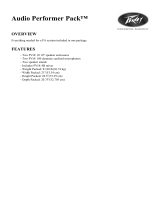QuickDraw
Boiler Water
with AquaPLEX
®
Storage and Semi-instantaneous Tank
8 PV500-26 06/2020
4 WATER HEATER INSTALLATION
4.1 Checking Equipment Before You Install
Inspect the unit completely upon receipt from the freight carrier before signing the bill of lading. Inspect the appliance
and all accompanying parts for signs of impact or mishandling. Verify the total number of pieces shown on packing
slips with those actually received. Contact the freight carrier immediately if any damage or shortage is detected.
4.2 Codes
The equipment shall be installed in accordance with the instructions in this manual, appliance markings and
supplemental instructions and in compliance with those installation regulations in force in the local area where the
installation is to be made. These shall be carefully followed in all cases. Authorities having jurisdiction shall be
consulted before installation is made. All appliances conform to the latest edition of the ASME Boiler and Pressure
Vessel Code, Section IV, Part HLW or Section VIII.
4.3 Electrical Requirements
The heater is wired for 120VAC/1ph/60Hz volts and must be electrically grounded in accordance with local codes, or
in the absence of local codes, with the latest edition of the National Electrical Code NFPA-70. When unit is installed in
Canada, it must conform to the Canadian Electrical Code (CEC), CSA C22.1, and/or local electrical codes.
1. Branch circuit protection and disconnecting means must be furnished by the installer. Refer to the wiring diagram
provided with this unit when installing or troubleshooting the electrical components of this heater.
2. All wiring must be in accordance with all local, state, or federal codes.
3. Provide proper overload protection for the system’s circulating pump.
NOTE: Use only copper wire of proper sizing for incoming service. The warranty on this unit does not cover damage
resulting from the use of aluminum wiring.
Utiliser du fil de cuivre de la taille appropriée pour le service électrique entrant. Les dommages résultant de l'utilisation
de fil d'aluminium seront exclus du champ d'application de la garantie de cet appareil.
4.4 Location
1. Locate the unit in a clean and dry area as close as possible to the greatest hot water usage and as near to boiler
water and/or electrical power as practical.
2. Install the unit on a firm, level foundation.
3. Locate the foundation on a pitched floor near a suitable drain, or make other provisions to prevent contact to areas
of the building subject to water damage should a boiler water or a water connection leak. The drain must be sufficient
to contain water in excess of 210°F.
4.5 Installation
WARNING: Use industry standard safe rigging methods, such as including the use straps and spreader bars
and lifting from the water heater base skid assembly, when attempting to lift or move this product. Failure to
follow industry safe rigging methods could result in property damage, serious injury or death.
1. Check the data decal on the heater. Be sure the electrical supply is adequate for the installation.
2. Carefully remove all shipping supports and bracing.
3. Do not attempt to move or lift heater by the plumbing connections or heat exchanger. Lift only by the skid using
industry standard safe rigging methods.
4. Provide sufficient clearance in front of heat exchanger to facilitate maintenance and removal. See “Service
Clearances” below.
5. Install shut-off valves and unions on the inlet and outlet water piping for servicing. Use caution when threading pipe
nipples into tank connections to prevent cross threading, or over-tightening. Always use a back-up wrench on tank
nipples when tightening unions, valves, etc.

























